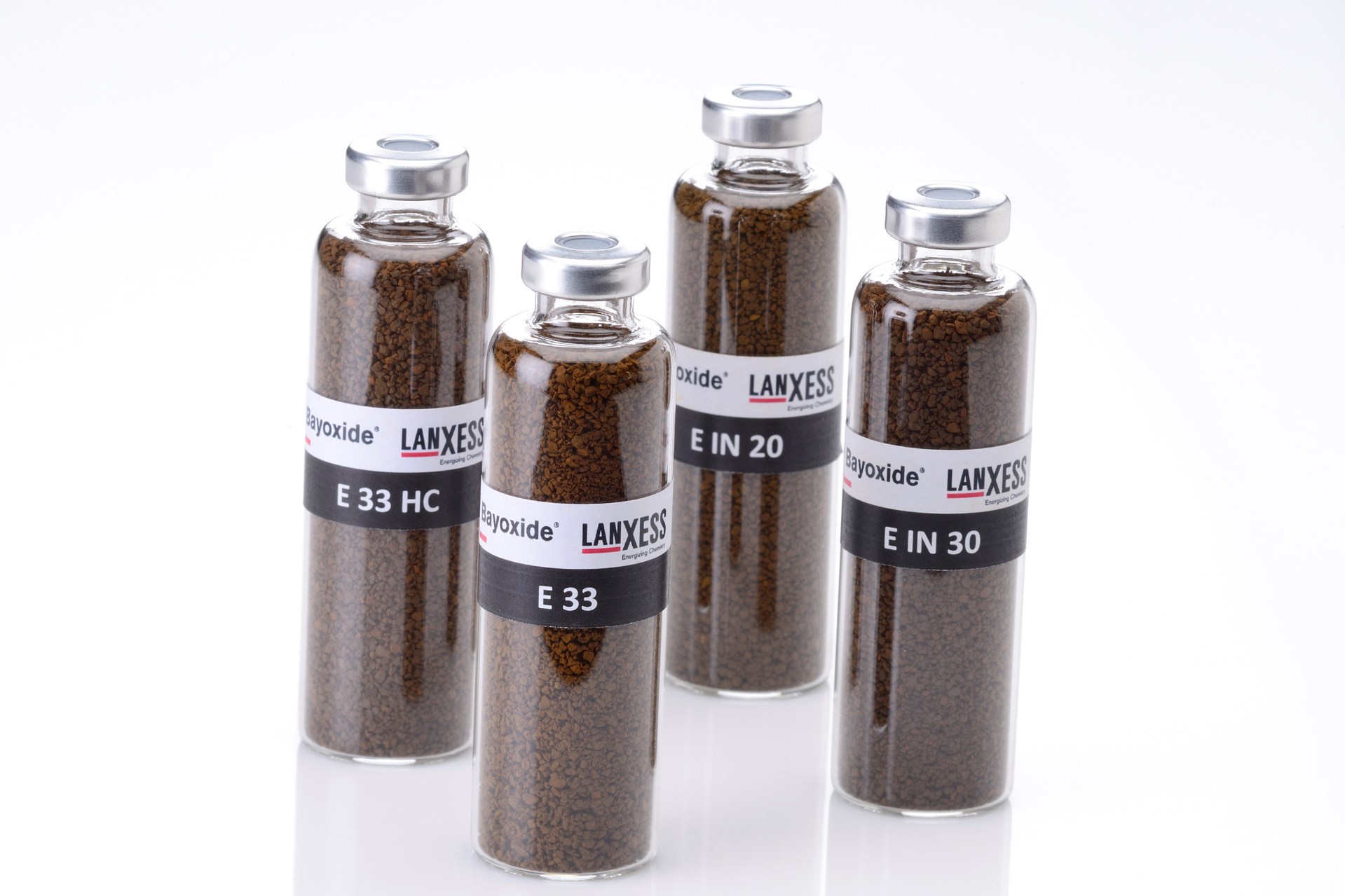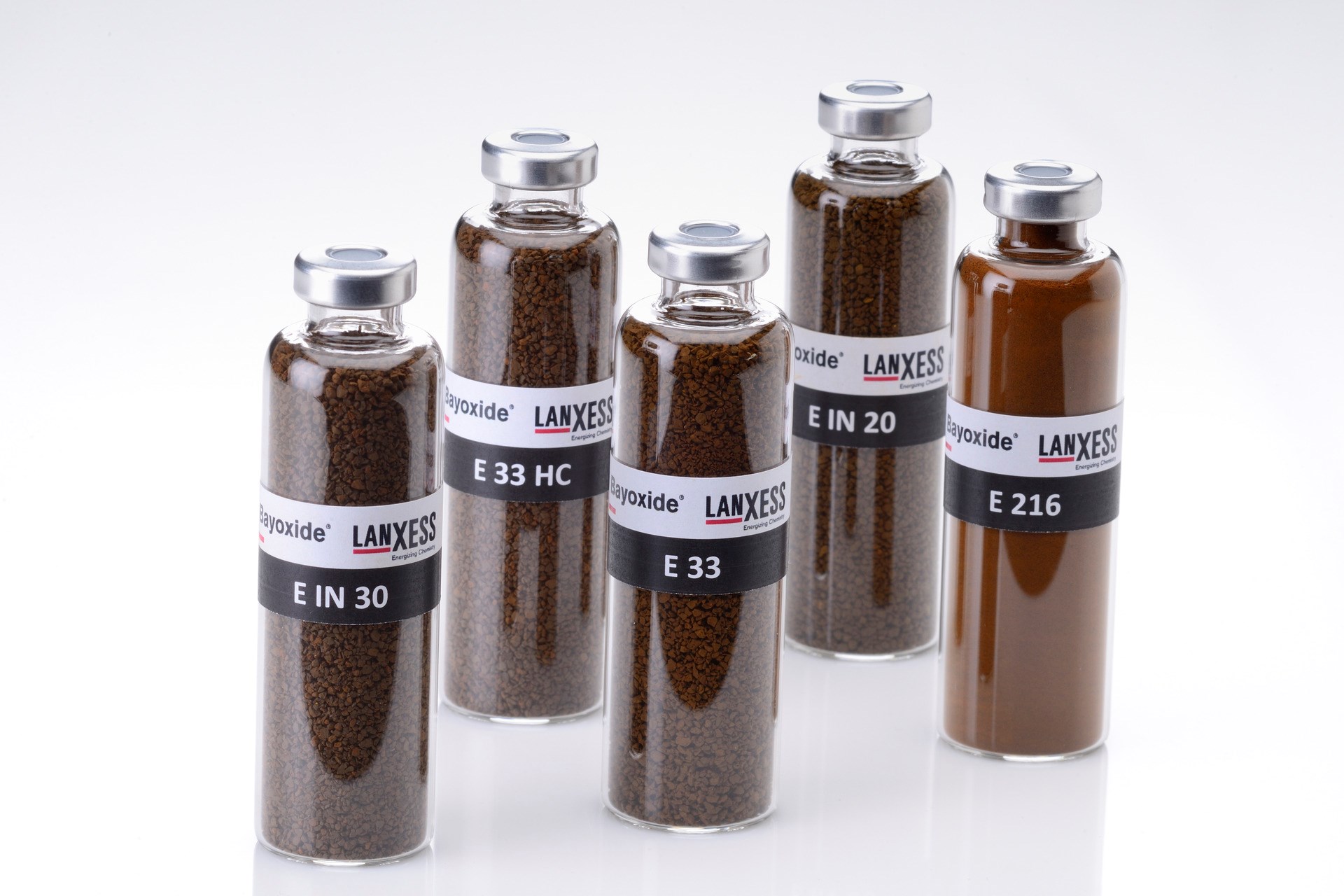
Bayoxide® iron oxide adsorbers - efficient arsenic removal and more
In addition to Lewatit® ion exchange resins, LANXESS also offers inorganic adsorbers that can be used in drinking water and wastewater treatment. Bayoxide® is a technical iron oxide adsorber in granular form. The product variants are based on defined crystalline α-iron oxide hydroxide structures and are especially suitable for removing arsenic and phosphate from drinking water or wastewater, but can also remove other metal ions, especially oxyanions.
Bayoxide® products are usually used in a continuous fixed-bed process in which the contaminated water is selectively purified. As a result, this technology can be easily and cost-effectively integrated into existing plants.
KEY APPLICATIONS FOR BAYOXIDE®
Removal of Arsenic
Due to their very high surface area and adsorption capacity, Bayoxide® iron oxide adsorbers can selectively and reliably remove arsenic to below the limit of 10 µg/L. Efficiency is significantly increased when existing As(III) is converted to As(V) by oxidation. Compared with conventional adsorption media, the Bayoxide® E 33 product, which has proven itself in this application, enables significantly longer filter operating times due to greater capacity. The arsenic is covalently bound to the adsorber as arsenate and can thus be disposed of very easily as a solid. Due to the achievable low As concentration in the effluent at the beginning of the cycle (<< 5ppb), the running time of the adsorber can be significantly extended by blending it with the raw water. By connecting two filters in series, the running time can also be significantly extended. The product types Bayoxide® E 33 and Bayoxide® E 33 HC are suitable for use in drinking water treatment and have the necessary certificates.
Phosphate removal
Phosphate contamination of wastewater often causes problems in receiving waters or, in other words, the waters into which the wastewater is discharged. Even in aquariums and aquacultures, only a certain phosphate level can be tolerated to prevent excessive algae growth and serious damage to fish and corals. Bayoxide® IN 20 (freshwater) and Bayoxide® IN 30 (saltwater) are capable of selectively removing phosphate from water. For large-scale use, regeneration of the adsorber can be considered.
Further Applications
Bayoxide® can significantly reduce the silicate content. Silicate reduction is selective and regeneration is possible in principle. One application would be the reduction of the silicate content in the feed to reverse osmosis plants, which allows a higher yield. Uranium can also be removed as an oxyanion. The fixed bonding of the uranate to the Bayoxide® adsorber simplifies the replacement and subsequent disposal. A large number of other metal cations are bound to the Bayoxide® adsorbers by a similar mechanism. In this case, use in the drinking water sector is possible at low metal concentrations. Bayoxide® E 216, for example, is used in combination with activated carbon in the household sector as a POU filter to remove arsenic and heavy metals due to its small particle size. Even for temporary applications such as the treatment of a defined volume, the use of the adsorbers makes economic sense due to the simple system technology and easy disposal.
Learn more about our Bayoxide® iron oxide adsorbers and Lewatit® ion exchange resins in the municipal water treatment industry.
